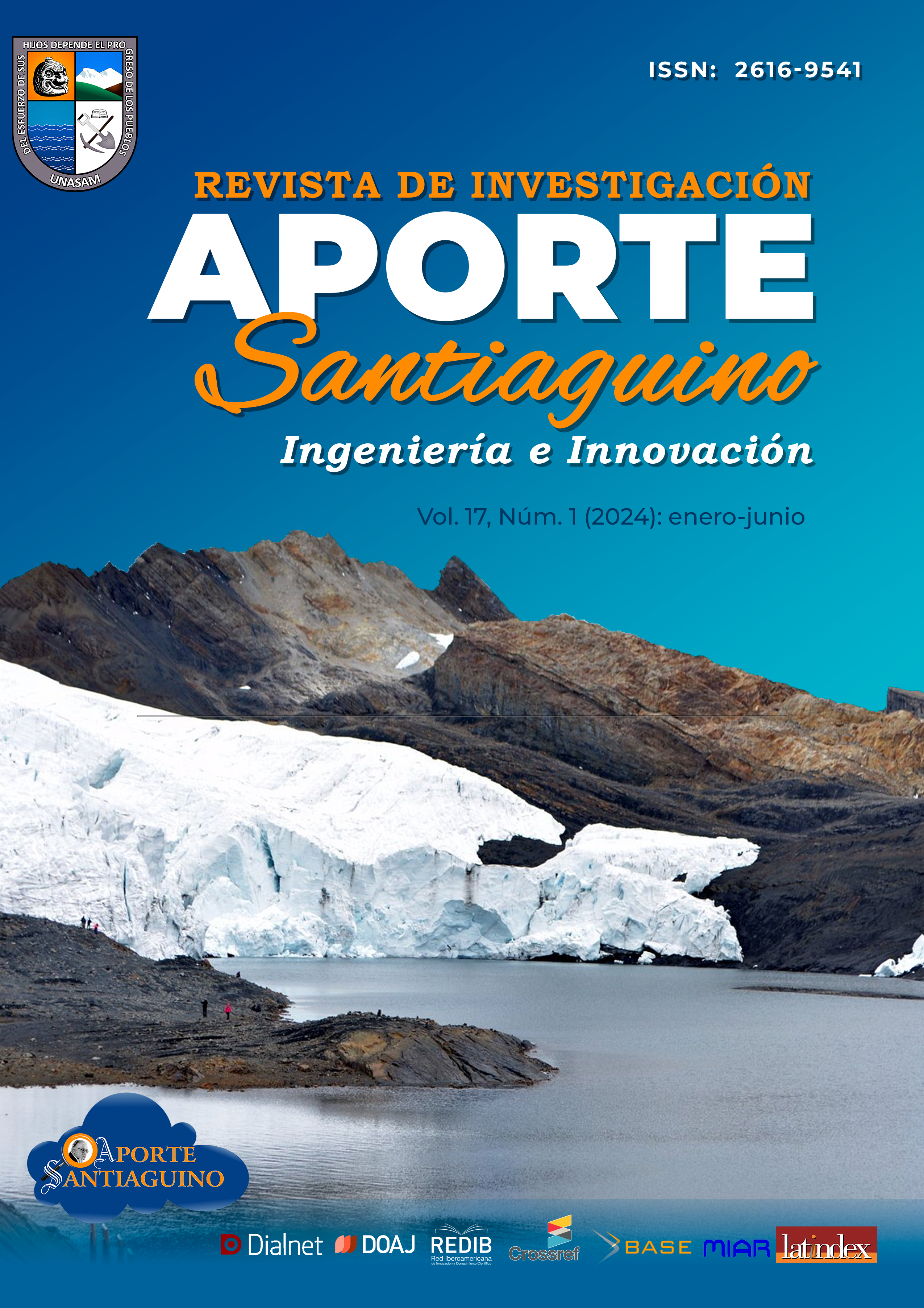Assessment of Bacterial Growth in Biofilms of Drinking Water Pipes
DOI:
https://doi.org/10.32911/as.2024.v17.n1.1126Keywords:
Biofilm, Bacterium, Drinking water, SimulatorAbstract
The aim of this study is to assess the bacterial growth time within biofilms in drinking water pipes. By simulating distribution networks at a scale level, bacteria were sampled, cultured, and quantified on plates over a 28-day period using various materials. The results underscore the dynamics of biofilm formation and bacterial growth. Following the initiation of the distribution network simulator, the formation of the biofilm and bacterial growth on the inner surfaces of the pipes was observed. Quantitative values were contingent upon the time and operational conditions of the simulator. After collecting and validating the data in the laboratory, it was concluded that bacterial growth within biofilms occurs within a 5-day operational period of the simulator, revealing temporal changes. Furthermore, the presence of aerobic bacteria such as Escherichia Coli and Staphylococcus Aureus.
Downloads
References
Barrera, J. (2014). Determinación experimental del crecimiento de biopelículas, en condiciones de baja velocidad en tuberías de distribución de agua potable [Universidad de los Andes]. https://repositorio.uniandes.edu.co/bitstream/handle/1992/17128/u703546.pdf?sequence=1
Beyenal, H. y Lewandowski, Z. (2002). Internal and External MassTransfer in Biofilms Grown at Various Flow Velocities. 55–61. https://sci-hub.se/https://doi.org/10.1021/bp010129s
Birhan, T. A.; Bitew, B. D.; Dagne, H.; Amare, D. E.; Azanaw, J.; Andualem, Z.; Dessie, A.; Guyasa, G.; Getaneh, A.; Addisu, A.; Genet, M.; Engdaw, G. T.; Tesfaye, A. H.; Asmare, T. K. y Yimer, T. F. (2023). Household drinking water quality and its predictors in flood-prone settings of Northwest Ethiopia: A cross-sectional community-based study. Heliyon, 9(4). https://doi.org/10.1016/j.heliyon.2023.e15072
Cowle, M. W.; Webster, G.; Babatunde, A. O.; Bockelmann-Evans, B. N. y Weightman, A. J. (2020). Impact of flow hydrodynamics and pipe material properties on biofilm development within drinking water systems. Environmental Technology (United Kingdom), 41(28), 3732–3744. https://doi.org/10.1080/09593330.2019.1619844
Donoso, A. (2009). Efecto de los materiales de las tuberias en la generacion de biopeliculas en redes de distribucion de agua potable [Universidad de los Andes]. https://repositorio.uniandes.edu.co/bitstream/handle/1992/11077/u371953.pdf?sequence=1
Duan, X.; Liao, X.; Chen, J.; Xie, S.; Qi, H.; Li, F. y Yuan, B. (2020). THMs, HAAs and NAs production from culturable microorganisms in pipeline network by ozonation, chlorination, chloramination and joint disinfection strategies. Science of the Total Environment, 744, 140833. https://doi.org/10.1016/j.scitotenv.2020.140833
Goraj, W.; Pytlak, A.; Kowalska, B.; Kowalski, D.; Grządziel, J.; Szafranek-Nakonieczna, A.; Gałązka, A.; Stępniewska, Z. y Stępniewski, W. (2021). Influence of pipe material on biofilm microbial communities found in drinking water supply system. Environmental Research, 196. https://doi.org/10.1016/j.envres.2020.110433
Learbuch, K. L. G.; Smidt, H. y van der Wielen, P. W. J. J. (2021). Influence of pipe materials on the microbial community in unchlorinated drinking water and biofilm. Water Research, 194. https://doi.org/10.1016/j.watres.2021.116922
Li, J.; Zhang, S.; Guo, L.; Chen, L. y Yu, Z. (2021). Chlorination contributes to multi-antibiotic resistance in a pilot-scale water distribution system. Water Supply, 21(8), 4369–4381. https://doi.org/10.2166/ws.2021.185
Liu, Y.; Shan, R.; Chen, G. y Liu, L. (2020). Linking flow velocity-regulated EPS production with early-stage biofilm formation in drinking water distribution systems. Water Science and Technology: Water Supply, 20(4), 1253–1263. https://doi.org/10.2166/ws.2020.039
Moreno, Y.; Moreno-Mesonero, L.; Ponce, A. S. y Cervera, J. M. (2019). Estudio de las poblaciones bacterianas en biofilms de sistemas de distribucion de agua potable mediante metagenómica. TecnoAqua. www.tecnoaqua.es
Potgieter, S.; Pinto, A.; Sigudu, M.; du Preez, H.; Ncube, E. y Venter, S. (2018). Long-term spatial and temporal microbial community dynamics in a large-scale drinking water distribution system with multiple disinfectant regimes. Water Research, 139, 406–419. https://doi.org/10.1016/j.watres.2018.03.077
Simunič, U.; Pipp, P.; Dular, M. y Stopar, D. (2020). The limitations of hydrodynamic removal of biofilms from the dead-ends in a model drinking water distribution system. Water Research, 178. https://doi.org/10.1016/j.watres.2020.115838
Trinh, Q. T.; Bal Krishna, K. C.; Salih, A.; Listowski, A. y Sathasivan, A. (2020). Biofilm growth on PVC and HDPE pipes impacts chlorine stability in the recycled water. Journal of Environmental Chemical Engineering, 8(6). https://doi.org/10.1016/j.jece.2020.104476
Zhang, J.; Li, W.; Chen, J.; Wang, F.; Qi, W. y Li, Y. (2019). Impact of disinfectant on bacterial antibiotic resistance transfer between biofilm and tap water in a simulated distribution network. Environmental Pollution, 246, 131–140. https://doi.org/10.1016/j.envpol.2018.11.077
Zhang, X.; Lin, T.; Jiang, F.; Zhang, X.; Wang, S. y Zhang, S. (2022). Impact of pipe material and chlorination on the biofilm structure and microbial communities. Chemosphere, 289. https://doi.org/10.1016/j.chemosphere.2021.133218
Zhu, Z.; Shan, L.; Hu, F.; Li, Z.; Zhong, D.; Yuan, Y. y Zhang, J. (2020). Biofilm formation potential and chlorine resistance of typical bacteria isolated from drinking water distribution systems. RSC Advances, 10(52), 31295–31304. https://doi.org/10.1039/d0ra04985a
Downloads
Published
How to Cite
Issue
Section
License
Copyright (c) 2024 Yony Rodriguez Minaya, Yelisca Lopez Molina, Ibeth Mejia Menacho, Yerson Chavez Cochachin, Yenica Narcizo Reyes, Cesar Reaño Romero

This work is licensed under a Creative Commons Attribution 4.0 International License.




















